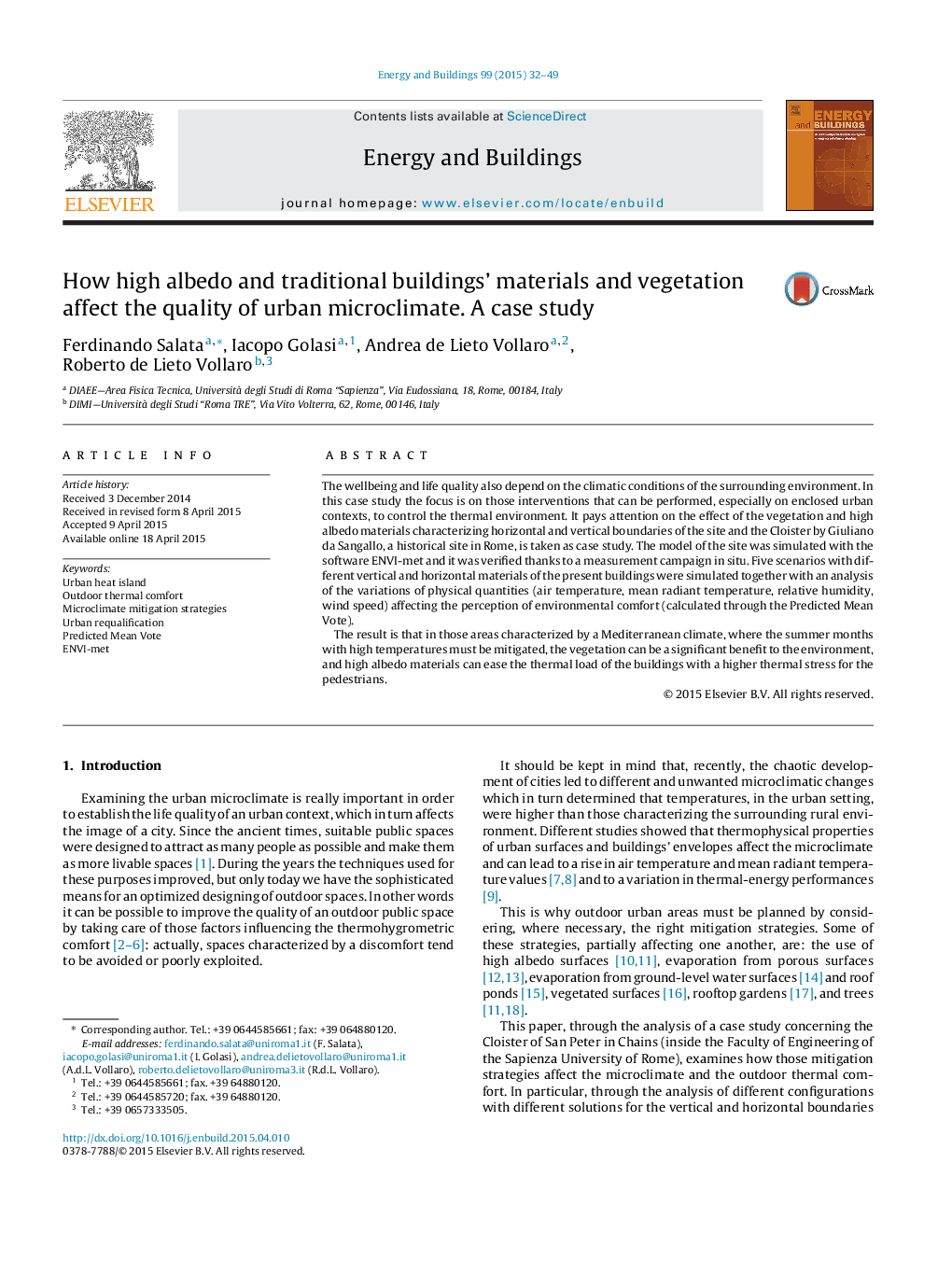| کد مقاله | کد نشریه | سال انتشار | مقاله انگلیسی | نسخه تمام متن |
|---|---|---|---|---|
| 262488 | 504035 | 2015 | 18 صفحه PDF | دانلود رایگان |
• Microclimate analysis of enclosed urban context in the Mediterranean area.
• Experimental calibration of simulation in ENVI-met.
• Influence of urban green and high albedo materials on outdoor thermal comfort.
• High albedo materials should be used considering the sky view factor.
• Urban green could lead to a decrease of 1.5 of the Predicted Mean Vote.
The wellbeing and life quality also depend on the climatic conditions of the surrounding environment. In this case study the focus is on those interventions that can be performed, especially on enclosed urban contexts, to control the thermal environment. It pays attention on the effect of the vegetation and high albedo materials characterizing horizontal and vertical boundaries of the site and the Cloister by Giuliano da Sangallo, a historical site in Rome, is taken as case study. The model of the site was simulated with the software ENVI-met and it was verified thanks to a measurement campaign in situ. Five scenarios with different vertical and horizontal materials of the present buildings were simulated together with an analysis of the variations of physical quantities (air temperature, mean radiant temperature, relative humidity, wind speed) affecting the perception of environmental comfort (calculated through the Predicted Mean Vote).The result is that in those areas characterized by a Mediterranean climate, where the summer months with high temperatures must be mitigated, the vegetation can be a significant benefit to the environment, and high albedo materials can ease the thermal load of the buildings with a higher thermal stress for the pedestrians.
Journal: Energy and Buildings - Volume 99, 15 July 2015, Pages 32–49
